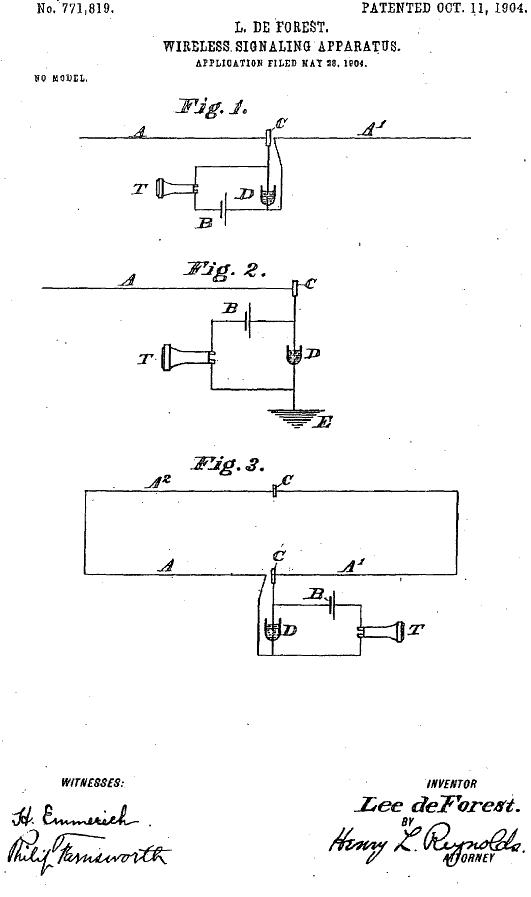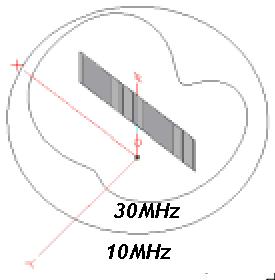John Stone Stone (1869-1943) patented the first effective direction finding system in 1902. [[1], [2]] Stone’s scheme involved a two element antenna with a first element (V) arranged no more than a half wavelength away from a second element (V’). The Figure below shows Stone’s invention. The two elements are arranged so that their respective signals add up 180 degrees out of phase with respect to each other. Thus, a signal incident in a direction normal to the plane containing the two elements their combined action is nil. Stone also embellished upon his invention in later years. [[3], [4]]

Soon thereafter, de Forest also invented a similar direction finding antenna system. [[5]] De Forest’s US 771,819 system involved a horizontal dipole, an “L” monopole, or a loop antenna – in each case, rotated so as to null out an incident signal. This basic principle, first discovered by de Forest, underlies many small-aperture direction finding techniques to this day. The Figure (below) shows three alternate embodiments of de Forest’s 1904 invention, each of which rotates about the “C” coupler.

Next time: RTLS – The First RF Ranging…
[[1]] John Stone Stone, Method of determining the direction of space telegraph signals, US Patent 716,134, December 16, 1902.
[[2]] John Stone Stone, Apparatus for determining the direction of space telegraph signals, US Patent 716,135, December 16, 1902.
[[3]] John Stone Stone, Apparatus for determining the direction of space telegraph signals, US Patent 899,272, September 22, 1908.
[[4]] John Stone Stone, Apparatus for determining the direction of space telegraph signals, US Patent 961,265, June 14, 1910.
[[5]] Lee de Forest, Wireless signaling apparatus, US Patent 771,819, October 11, 1904.


